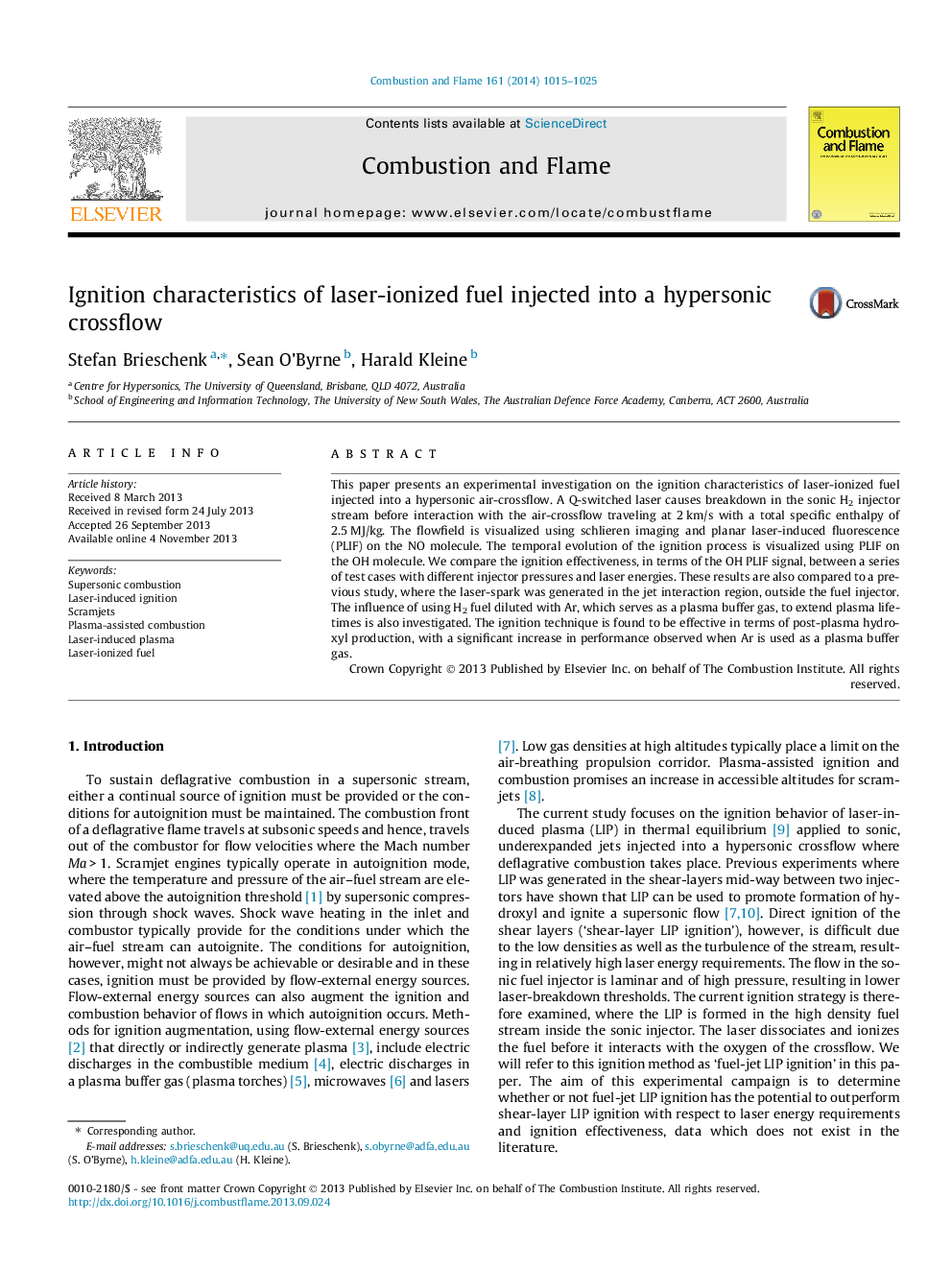| Article ID | Journal | Published Year | Pages | File Type |
|---|---|---|---|---|
| 168711 | Combustion and Flame | 2014 | 11 Pages |
This paper presents an experimental investigation on the ignition characteristics of laser-ionized fuel injected into a hypersonic air-crossflow. A Q-switched laser causes breakdown in the sonic H2 injector stream before interaction with the air-crossflow traveling at 2 km/s with a total specific enthalpy of 2.5 MJ/kg. The flowfield is visualized using schlieren imaging and planar laser-induced fluorescence (PLIF) on the NO molecule. The temporal evolution of the ignition process is visualized using PLIF on the OH molecule. We compare the ignition effectiveness, in terms of the OH PLIF signal, between a series of test cases with different injector pressures and laser energies. These results are also compared to a previous study, where the laser-spark was generated in the jet interaction region, outside the fuel injector. The influence of using H2 fuel diluted with Ar, which serves as a plasma buffer gas, to extend plasma lifetimes is also investigated. The ignition technique is found to be effective in terms of post-plasma hydroxyl production, with a significant increase in performance observed when Ar is used as a plasma buffer gas.
